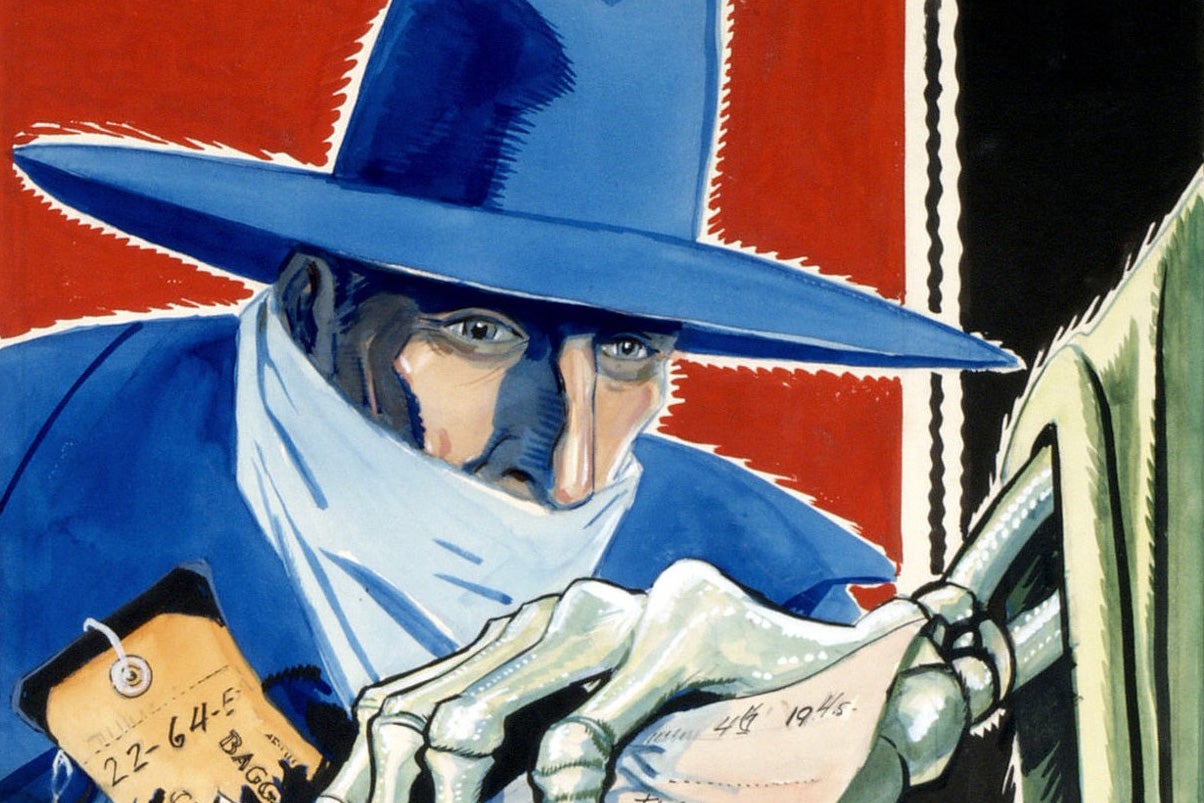The mid-twentieth-century writers Sylvia Plath, Jack Kerouac, and Amiri Baraka may not have much in common in terms of subject matter or writing style. But, as literary scholar Erik Mortenson writes, they had at least one shared influence: all had been childhood fans of the Shadow.
The pulp novels, radio shows, and comic books of the 1930s and ’40s were full of crime-fighters like Superman, the Flash, and Wonder Woman, who fought unambiguously on the side of good. The Shadow was something different, a defender of ordinary citizens who was also a spiteful vigilante with an eerie laugh.
“Even those he saved were not sure whether they would like to come across him on a dark night in a strange alley,” Mortenson writes.
The Shadow was a cross between a hardboiled detective and a superhero with mysterious powers. Using skills learned “years ago” in Asia, he was able to “cloud men’s minds” and sneak through the dark city unnoticed.
In Sylvia Plath’s 1959 short story “The Shadow,” the young protagonist, Sadie, enjoys Superman and Mickey Mouse, but it’s the Shadow who shows “how mean people can be.” This lesson resonates as Sadie experiences air raids and accusations that her German father could be a spy.
Mortensen writes that the Shadow “was a symbol of the destruction of a hypocrisy that formed the backbone of McCarthyism, nuclear brinkmanship, and fervent patriotism. A great part of the appeal of this character for Plath…was that he contained both good and evil.”
In Kerouac’s 1952 novel Doctor Sax: Faust Part Three, Jackie Duluoz, a stand-in for the author’s younger self, is a fan of the character, trading magazines featuring the stories with his friends. The Shadow also manifests in the form of the eponymous character of Doctor Sax, who has his trademark laugh and tendency to hide in dark places.
“Doctor Sax initially appears to be evil, but, like the Shadow, comes to represent the search for something vague and undefinable that the narrator was after all along,” Mortenson writes.
Like Plath, Kerouac connects the theme of shadows to global tensions, particularly the looming presence of the atom bomb.
Weekly Newsletter
In Baraka’s first book of poetry, Preface to a Twenty Volume Suicide Note (written under his given name, LeRoi Jones), the Shadow makes several appearances. In the poem “In Memory of Radio,” Baraka asserts “the divinity of Lamont Cranston,” the character’s mundane alter ego, and later quotes the tagline “Who knows what evil lurks in the hearts of men? The Shadow knows.”
Like the other writers, Baraka uses the character to explore ambiguity, in his feelings about his childhood and its end, and in political and social distinctions between good and evil.
“Plath, Kerouac, and Baraka used the Shadow to explore the obverse side of American optimism, simultaneously questioning the innocence of childhood and the conformism of America along the way,” Mortenson writes.







